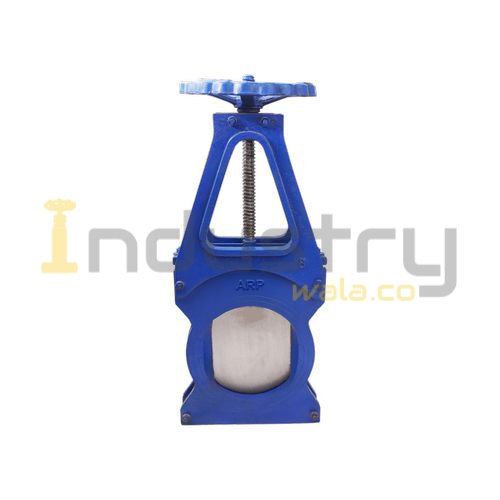Product Information
Description
Additional information
Reviews
Description
Pulp valves are designed mainly for on-off and isolation services in systems with high content of suspended solids. Pulp valves are especially beneficial for handling slurry in addition to viscous, corrosive and abrasive media. The valves have a minimised pressure drop in fully open position, they are easy to actuate, they have a relatively low weight and are cost-effective.
effective.
Where are pulp valves used?
Pulp valves are designed to work in some of the harshest environments, typically having a sharpened blade to cut through heavy liquids.
They are especially useful in wastewater applications where corrosion is an important issue. So, in addition to the valve design optimised for slurry media, it is beneficial to have a knife made of acid-proof stainless steel as this makes it less susceptible to damages caused by corrosion and as a consequence it needs less frequent maintenance or even replacement.
Pulp valves should only be used for applications requiring a completely open or completely closed position and should not be used to regulate flow unless they are designed for it. Whenever fluid is forced against a partially closed gate, there will be a vibration, gradually eroding the disc and seat. In addition, the pulp valves are designed to slowly open and close to safeguard against the impacts of water hammer.
What is the difference between pulp valves and gate valves?
Both the wedge type gate valves and the pulp valves are primarily designed for on-off services where the valve is completely opened or completely closed. It is not recommended to use neither of these to regulate flow because when fluid pushes against a partially closed gate, vibration occurs, and cavitation will eventually damage the seat and the body. Also, both valve types are designed to open and close slowly in order to reduce the risk of water hammer.
Additional information
Additional information
| SIZE | 11/2" / 40MM, 2" / 50MM, 21/2" / 65MM, 3" / 80MM, 4" / 100MM, 6" / 150MM, 8" / 200MM |
|---|
Reviews








